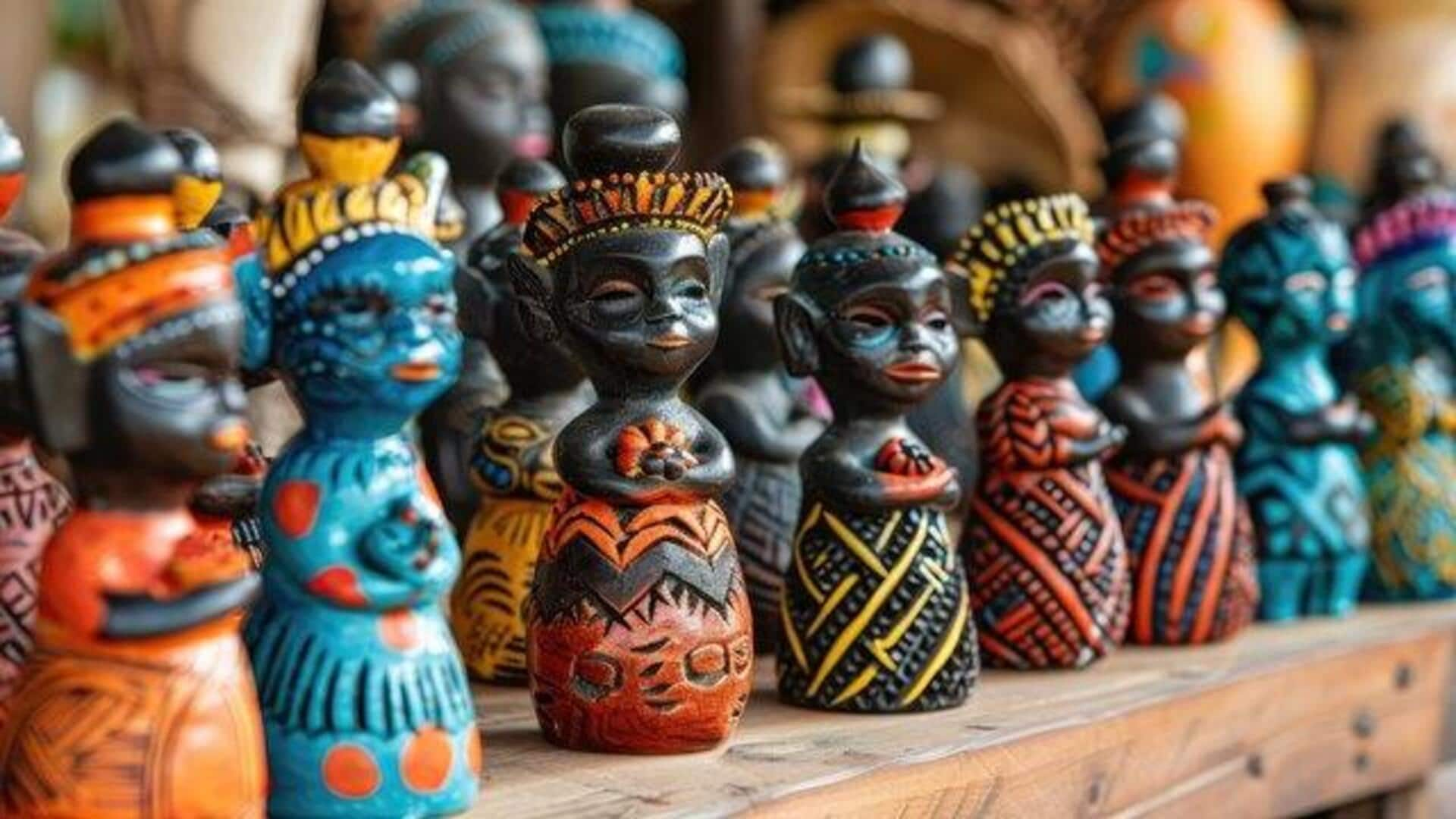
Exploring the art of African doll-making
What's the story
The art of doll making in Africa is a centuries-old tradition, reflecting the continent's vibrant cultural diversity and creativity. These dolls are more than just toys; they hold deep cultural, spiritual, and social significance. From the use of natural materials to the intricate designs, the craft of African doll-making weaves narratives of heritage, identity, and community values.
History
Historical significance and symbolism
African dolls hold a special place in the continent's history, fulfilling various roles across different cultures. Some are used in fertility rituals, while others teach children about their societal roles. The materials used (wood, clay, beads, fabric) reflect the local environment and resources available to artisans. This tradition shows how art can be a part of daily life and spiritual beliefs.
Craftsmanship
Materials and techniques
The making of African dolls utilizes materials such as wood, beads, fabric, clay, and recycled items. Craftsmen choose materials based on both their accessibility and symbolic importance. Techniques differ depending on the region and material, with carving used for wooden dolls and sewing for cloth figures. This variety in materials and techniques highlights the flexibility and innovation inherent in African art traditions.
Diversity
Cultural diversity through dolls
Every corner of Africa holds a distinct doll-making tradition, mirroring the customs, beliefs, and beauty of its people. Take, for example, the Akua'ba dolls of Ghana with their characteristic disc-shaped heads, they represent beauty ideals in Ashanti culture. On the other hand, Namji dolls from Cameroon, decorated with vibrant beads, embody hopes for fertility. The diversity is a testament to Africa's immense cultural wealth.
Modernity
Contemporary relevance
Lately, traditional African dolls are experiencing a resurgence in popularity, both within the continent and beyond. Modern artists are breathing new life into these designs, combining contemporary materials and themes with the timeless techniques of the past. This fusion of old and new not only keeps this ancient art form alive but also allows it to grow and adapt to the modern world.
Collecting
Collecting tips for enthusiasts
If you're looking to start or grow your collection of African dolls, make sure you do your homework about authentic sources before buying anything, particularly online where fakes are plentiful. Always purchase from reputable dealers or directly from artisans whenever possible. Understanding the cultural background and significance of each doll will also deepen your appreciation for these beautiful works of art.